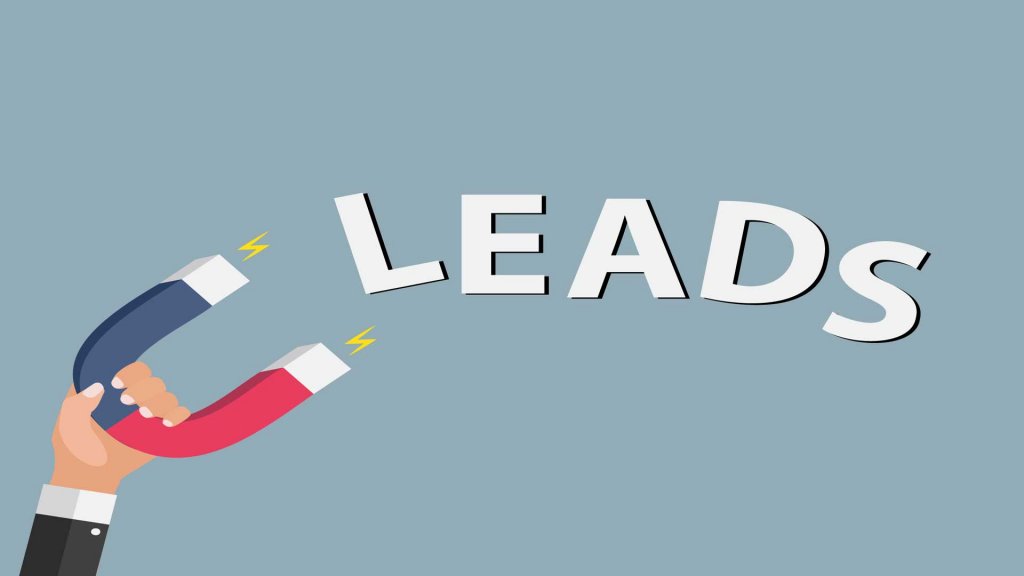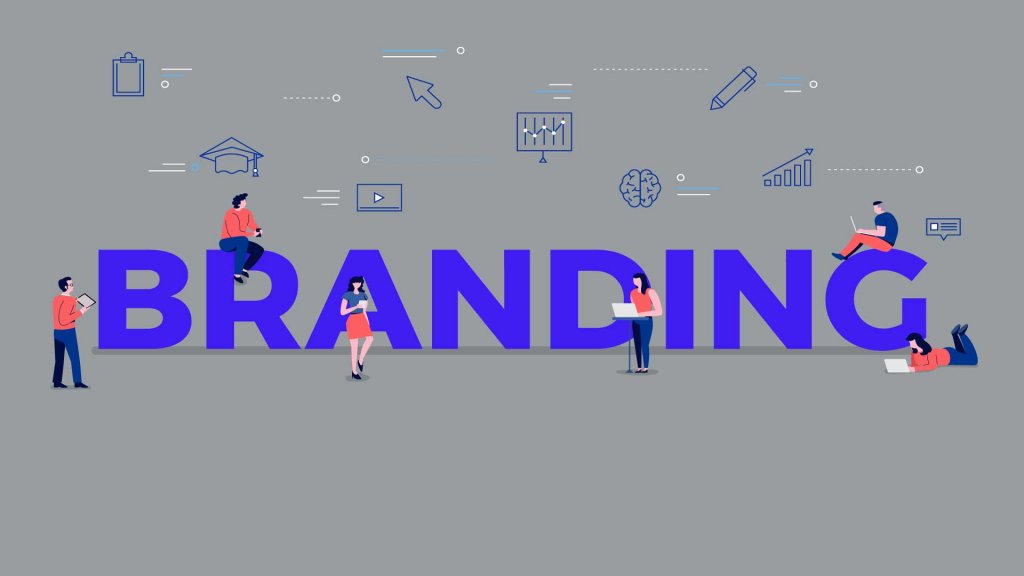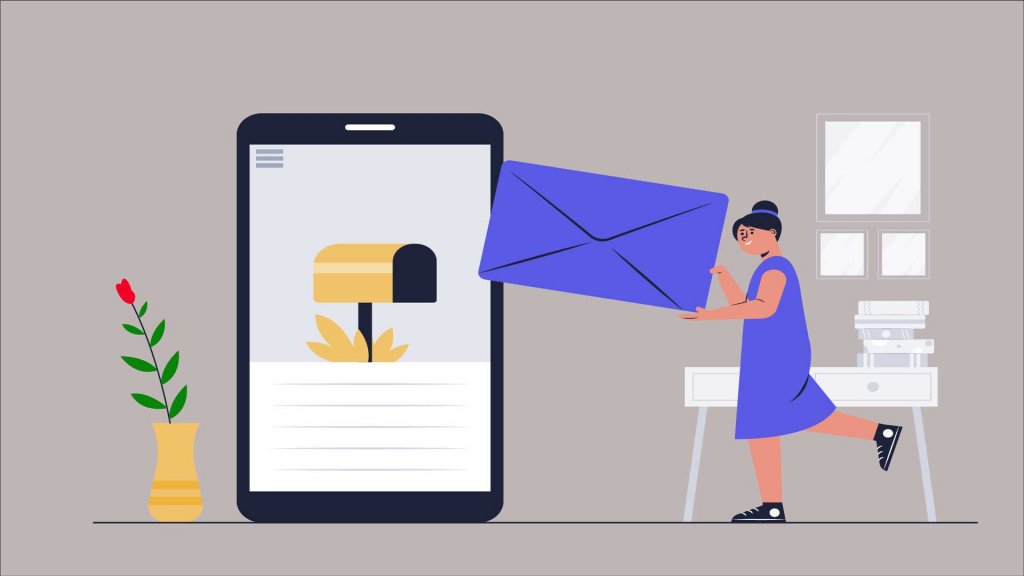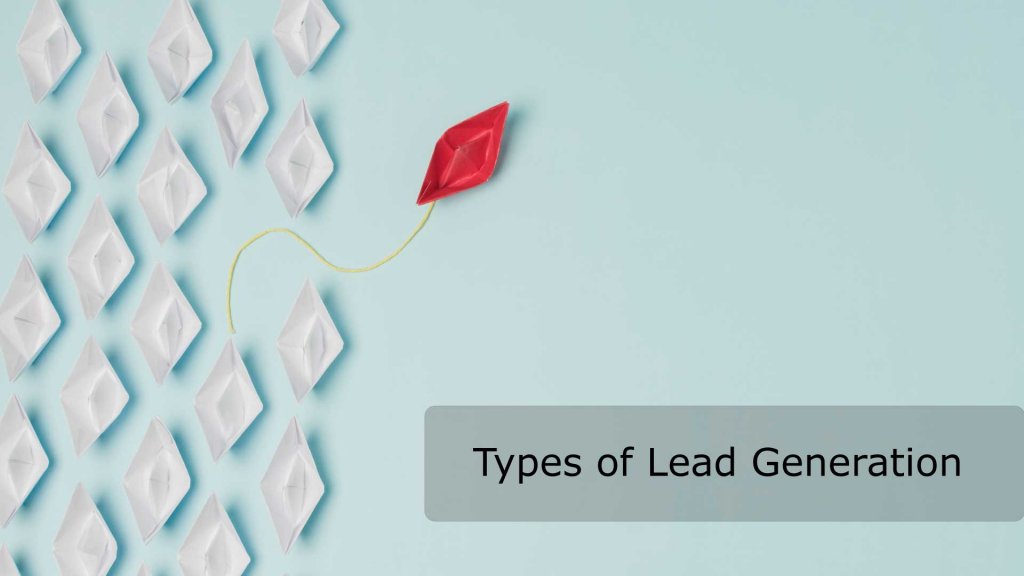In this article, we’ll discuss the type of lead generation. Lead generation is the process of generating leads, which are then qualified into sales leads or marketing lists. Leads are prospects for either business-to-business (B2B) or business-to-consumer (B2C) transactions.
A lead is someone who shows interest in a product or service and may want to buy it at some point in the future. When a lead becomes interested in the product and successfully enters into the sales cycle, they become a customer.

Lead generation may sound like fancy marketing jargon, but the concept of generating leads is quite simple. Lead generation is a marketing activity that your business uses to find new customers and create new relationships with them. There are many types of lead generation, but if you are a small business owner, you probably have to choose the quickest and easiest place to start.
The importance of lead generation is very high in any business campaign because it drives more sales to the company. These campaigns usually consist of advertising and social media marketing to get new people to sign up for a list or download a document that informs them about their product.
The lead generation process is divided into some parts, which depend on the stage of the sale: Generating leads for sales or marketing purposes. Qualifying leads based on criteria such as company size, industry, and budget. Tracking customer activity via surveys and website visits.
Lead Generation Types and Tips:
Inbound Telephone calls
A website can generate leads by presenting a lead capture form on the landing page, which asks for the contact information of visitors to fill in and submit online.
When you are trying to come up with a lead generation strategy, your call to action must be prominently placed on your website.
This will make it easier for potential customers to locate and contact you. Your call-to-action can be placed in the header and footer of your website or on each page of the site. You may also want to include a telephone number with memorable word references so customers can easily remember it and contact you.
Outbound Telemarketing
Telemarketing is the practice of making outbound telephone calls to a potential customer or client to persuade them to buy a product, service, or idea.
Telemarketing is not only about filling in forms because you have to get people on a call and then convince them over the phone. Before it was easy but now it’s harder. Outbound telemarketing might be less effective than before but opportunities are plentiful including calling lost or do not answer leads.
Public Relations
Public relations are the art of connecting with people through earned media. PR firms are in charge of different tasks such as promoting the business which includes writing press releases, arranging media interviews, arranging and coordinating promotional events, as well as monitoring what people say about the company via social media.
Public relations have been traditionally known for offline practices such as arranging interviews with journalists. However, many experts claim that PR practices are being replaced by online PR practices because of low cost and increased ease of access to audiences who are interested in the company’s products or services.
Branding
Brand recognition is a very important objective for any company, and it’s usually very expensive to acquire that. Offline branding can be very expensive, but it’s the most effective type of lead generation. You can use offline branding to reach your target audience in an environment that they are comfortable with.

It’s the most effective type of lead generation. It lets you build your brand presence in a way that nobody can ever forget. The best part of branding is that it happens without any effort put in. It’s your brand story and the way you tell it that defines how people view you.
Partnership
Business partnerships or collaborations can be a great way to generate leads. You’ll want to start by identifying your target audience and looking for potential partners in the industries or fields that they’re interested in. Then, you should identify what it is you want out of the partnership. Do you want them to introduce your product? Share your content? Or would you like them to point their customers in your direction?
The most important thing to consider before any form of partnership is that it must be mutually beneficial for both parties. Whether you are operating in the B2B or B2C domains, partnering with someone or something will make your lead generation effort a lot easier.
Search Engine Optimization
Lead generation is a fraction of website traffic that comes from non-organic sources such as paid advertising campaigns, social media promotions, webinars, and more.
Traffic influences SEO because when people visit your website from an organic search engine result page, they are likely to be looking for a solution or service you provide. This makes them much more likely to convert into customers than if they found your website through another channel.
Offline Ads
Offline advertisements are by far the most cost-effective way to reach a mass audience. Although they might not be as effective when compared to online ads, they still have a significant impact on consumers.
Offline advertisements can reach the most difficult-to-reach audiences, such as people who don’t use social media or who don’t have access to the internet. It offers excellent benefits for local businesses who want to advertise in their vicinity.
Offline ads are created to be viewed in public places. They’re a powerful way to create awareness and generate leads. Because they are in the direct line of sight of the people who will potentially become customers.
Direct Mail
Direct mailing is a marketing technique that dates back to the 18th century. It refers to when a business sends envelopes or postcards to potential customers using snail mail to generate leads.

This time-tested strategy is still around today with many companies still using it as one of their lead-generation techniques. The low cost and high conversion rates of direct mail have made it one of the most popular lead-generation methods out there.
Lead Generation has been around for a very long time, and its popularity hasn’t diminished in recent years because of uncontrollable changes due to technology. Direct Mail Marketing is one of the oldest marketing techniques that many companies use as a part of their lead-generation strategy.
Customer Incentives
Lead generation for businesses is essential they rely on customers to buy their services and products. If a business has a customer-centric approach, they need to have an effective way of generating leads to convince new customers to join. That’s why incentive programs and customer offers are becoming so popular.
People love incentive programs because they represent an opportunity for them. They enjoy feeling like they are getting something special, making their purchase more valuable. It is also a way for customers to feel appreciated and that the company cares about them and their needs as individual human beings, not just as someone who pays them money for their product or service.
Some customer incentives you can offer are:
- Coupons
- Gifts
- Loyalty or points programs
- Referral programs
Online Events
Online events are big business. They are a great way of cutting costs and time invested in follow-up sales. They also help you reach out to more customers in a day than when hosting a traditional conference or seminar which is limited by its physical locations.
You can set up an event page on your website, Facebook, Google+, or LinkedIn to make it more interactive for your attendees and generate leads from them as well. People who sign up for your events must provide their contact information which is then passed on as a lead generation database to your sales team.
Although the term “online event” may sound contradictory, they are just an extension of your marketing efforts. They can be events hosted on social media or in virtual reality.
Social Media
Social Media has been around for a while now and it is surprising how many companies are still not aware of its benefits. This can be to the detriment of those who don’t use it.
Social Media is not just a rose-colored picture, there are many ways that you can leverage social media to your advantage from advertising and marketing to customer service.
The scope of Social Media marketing is much bigger than just social media. It incorporates many different aspects such as content curation, email marketing, and even chatbots. The goal is not always just sales or conversions but also engagement, leads, brand awareness, and reputation management.
Social media has been proven to be a very successful type of lead generation. It has been used by many companies with success, no matter their size. With social media, businesses can promote their products and services to consumers and receive feedback on what they think about it. It’s a win-win situation for both the company and its clients. As it generates revenue for the company through leads generated, which in turn generate revenue for themselves as well.
Email Marketing
Email marketing for lead generation is one of the most popular means of generating leads these days. As the earth moves into a digital era, more and more people are now getting accustomed to communicating through emails rather than over phone calls or face-to-face interactions.
Email marketing has been a great way for companies to keep in touch with their customers and interests. It allows them to build loyal customer bases by providing valuable information that they need regularly.
The email marketing strategy that is used most often is using e-newsletters. With a newsletter, businesses can provide valuable information about things like new products or services, discounts, or giveaways. The key is to keep these emails coming so people never forget about you and always come back for more when they need it.
Use Call to Action
Call-to-action is designed to encourage people to take a certain action. It can be as simple as asking them to buy a product or subscribe to your newsletter.
Calls to action are a feature used on almost every website and can be the difference between a successful campaign and a not. There are three main types of calls to action:
- Primary Calls-to-Action (CTA): The primary call to action usually stands out because it has more color or is set as a button. This is the one that most people will click on.
- Secondary Calls-to-Action: Secondary CTAs are less noticeable because they are in smaller text, but they still get conversions.
- Tertiary Calls-to-Action: Tertiary CTAs are even less noticeable than secondary CTAs in the sense that you need to scroll down to find them. They may not get many conversions, but they help with branding and building credibility for you and your brand.
Recommendation
We recommend looking at PnaPna.com which has a PnaPnaCleaning.com variant specifically designed for cleaning service companies. There is no credit card required to sign up. Also, they offer a 60-day money-back guarantee. They have a lead generation system, a digital marketplace where you can advertise your business for free. A free integrated website where you get a free web order form from your clients and the orders go straight into the software for Employee monitoring, time management, payroll, etc. The system allows collecting payments online or on job sites. It is well integrated on mobile phones as well as a PC. You will save two full employees’ annual salaries, to do all these tasks automatically.
The company will also specifically design any feature that may be very unique to your company. The owners of this software company have been in the field service business for decades and know the issues of small to medium size field service companies. Good software is an asset that will reward you many times more than the investment. They have a lifetime subscription for a one-time fee of $99.99. Even if you do not buy anything from PnaPna, you can avail of their free-for-life subscription and free advertising in your marketplace on their portal.


